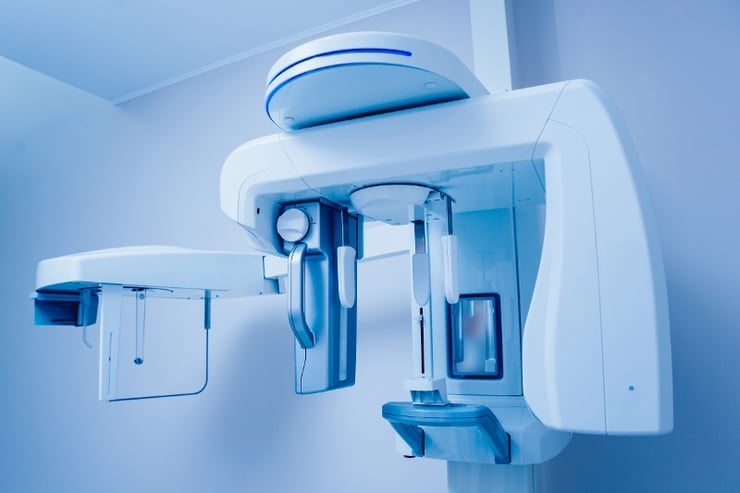Numbers to Grow by
In the age of changing and advancing technology, dentists may consider new gadgets such as lasers, imaging, or phone systems to improve their dental practices. However, in speaking with doctors over the years, I have found that growing your practice is often more about a better use of what you already have. That includes knowing which numbers to track to ensure growth.
Here are some numbers that may not be monitored by every office owner.
Production by each provider and their average production per day.
Knowing how much each dentist and hygienist produce daily may help you understand how effectively and efficiently your practice is running. Checking the daily production average may tell you much more just looking at the monthly total.
Monitoring and calculating your daily production average each month gives you a clear view on the health of your scheduling system. Once you follow a good protocol, production between months is typically steady.
If your daily production isn’t healthy, look at the mix of procedures and the scheduling. Determine if you are allocating time for more production items. Practices typically need 2-3 productive procedures per day to maintain a healthy practice.
Improve your daily production and scheduling needs by finding 3 examples of ideal days from previous months. Let the team help you determine what constitutes an ideal day. It might be a factor of things: you achieved a certain production level or you were able to break for a full lunch and end the day on time.
For some dental practices, improvement may be found in having a longer morning session for more complex procedures, taking lunch from 1-2 pm so working patients can be seen during the noon hour, and scheduling in 10 minute time increments to allow the practice to better utilize and customize appointment time. For example, an operative procedure that takes 18 minutes time, on average, you can schedule 20 minutes (2 ten minute units) rather than 2 fifteen minute units, or 30 minutes.
Understanding your dental practice’s production per day may also keep you aware of case acceptance. If you need 2 production blocks in your schedule per day, you may need to diagnose 3 or 4 patients on average. This does not mean creating a sense of treatment when it isn’t there. If you have had a day of healthy patients, your team should go into the delayed treatment file to identify a patient who needs treatment.
Active patients
One of the most important numbers to know is the size of your patient base. You must first define your active patients by counting all of the patients you have seen in the last 12 months. In your reports section, run a report by date period. This shows how many patients you saw during that time period. Some practice owners only know the total number of patients they have seen over the lifespan of the practice — this may include active and inactive patients. Some dentists may max out at 2,000 active patients. The goal isn’t always to have more. Consider running this report using the same parameters every January for the previous year, it can help you see who is leaving your dental practice.
Knowing how many active patients you have may also help you determine other important goals, such as how many new patients you need each month and how many days of hygiene is healthy for your practice.
Case acceptance
Some software doesn’t adequately track treatment acceptance. Knowing how well your patients accept treatment may help you become a better educator and communicator.
Track everything you recommend. Put it in the patient record. If the patient agrees to the treatment, makes financial arrangements, and schedules the next appointment, they’ve accepted. Unfortunately, it gets tricky when a patient initially agrees, goes through the same steps, but then cancels. A system that allows you to update information can be important.
Part of tracking compliance is the time you spend discussing how you did and how you can improve. Having honest discussions at staff meetings may help everyone improve this system. Regularly practicing, even role-playing, might be helpful if you want to improve your effectiveness. The goal is never 100% acceptance. The goal is to improve while focusing on patient health.
Number of clinical days
Some of my friends are dentists and like the control they have as owners of their businesses. Picking your own schedule is great. However, some dental practice owners struggle and make the critical mistake of working too many days each month and each year.
Do you track the number of days you work each year? It is something to consider when creating your annual plan. Dentistry can be tough physically and mentally. If you want to stay healthy and inspired, include some downtime in your schedule.
Dentistry can be hard. It can be tough on your spine, eyes, and hands. Consider working 180 to 185 days a year. That’s 15 days a month, on average. Take some time for vacation, for continuing education, or for staff retreats. Refuel, reinvest, and reflect. The happiest clients I’ve had over the years are ones that have a better work/life balance and have invested in themselves to understand how to have an efficient office with well-trained staff.
The team at LenDRgroup Consulting cares about the long-term success of your practice. No matter if you are in need of practice financing or business consulting, we are able to craft a customized plan to fit the unique needs of not only your practice, but also your career. We bring a lending platform of 300+ dental and healthcare-specific lenders, and we built this network with the purpose of helping dentists, veterinarians, and physicians. We want you to achieve your dreams of practice ownership while eliminating the obstacles associated with practice financing.
To date, we have helped hundreds of medical professionals expand and grow their practices. LenDRgroup Consulting recognizes and understands the needs of your business and can provide guidance to help avoid costly mistakes. So, let’s get started. Contact us today to schedule a one-on-one consultation.


